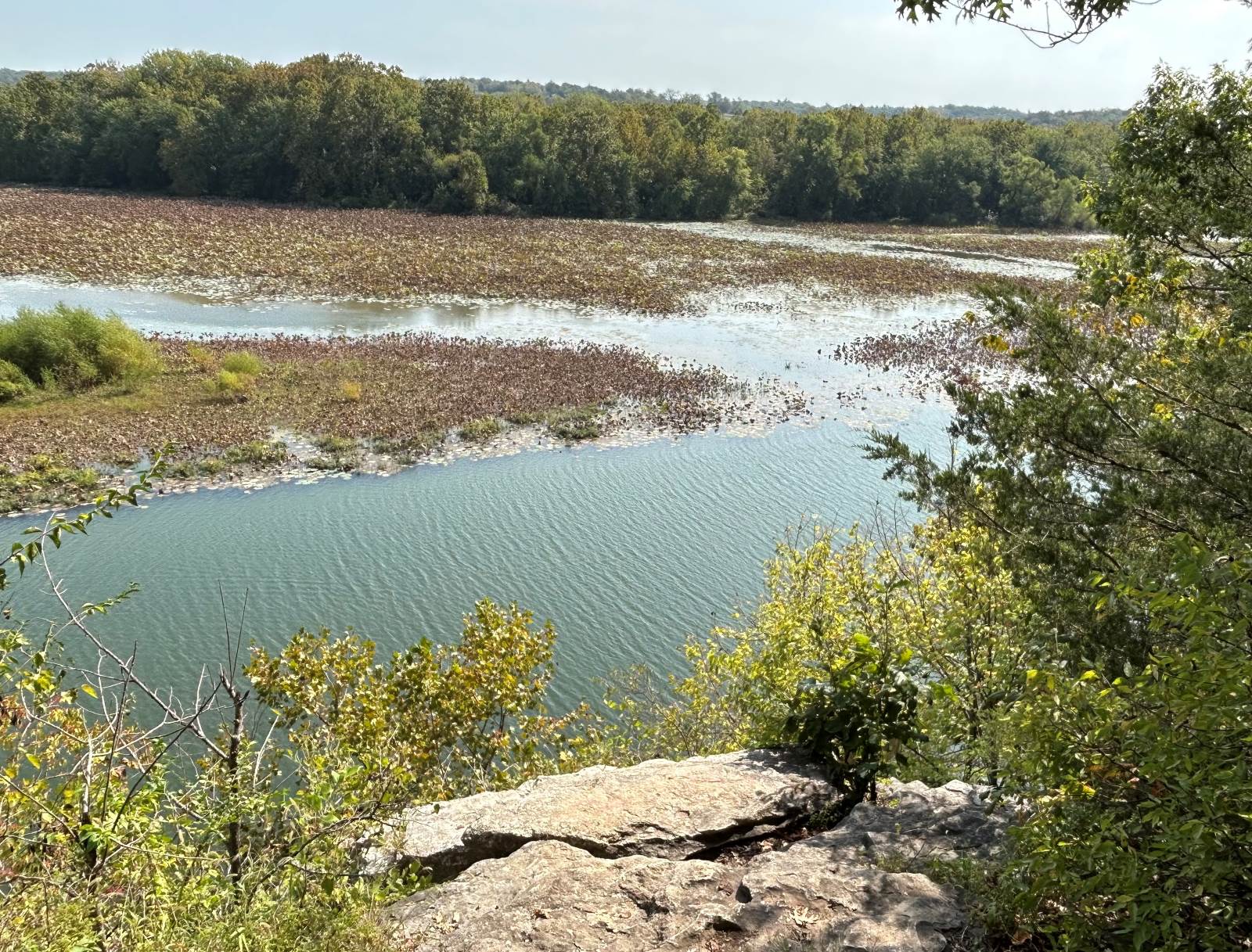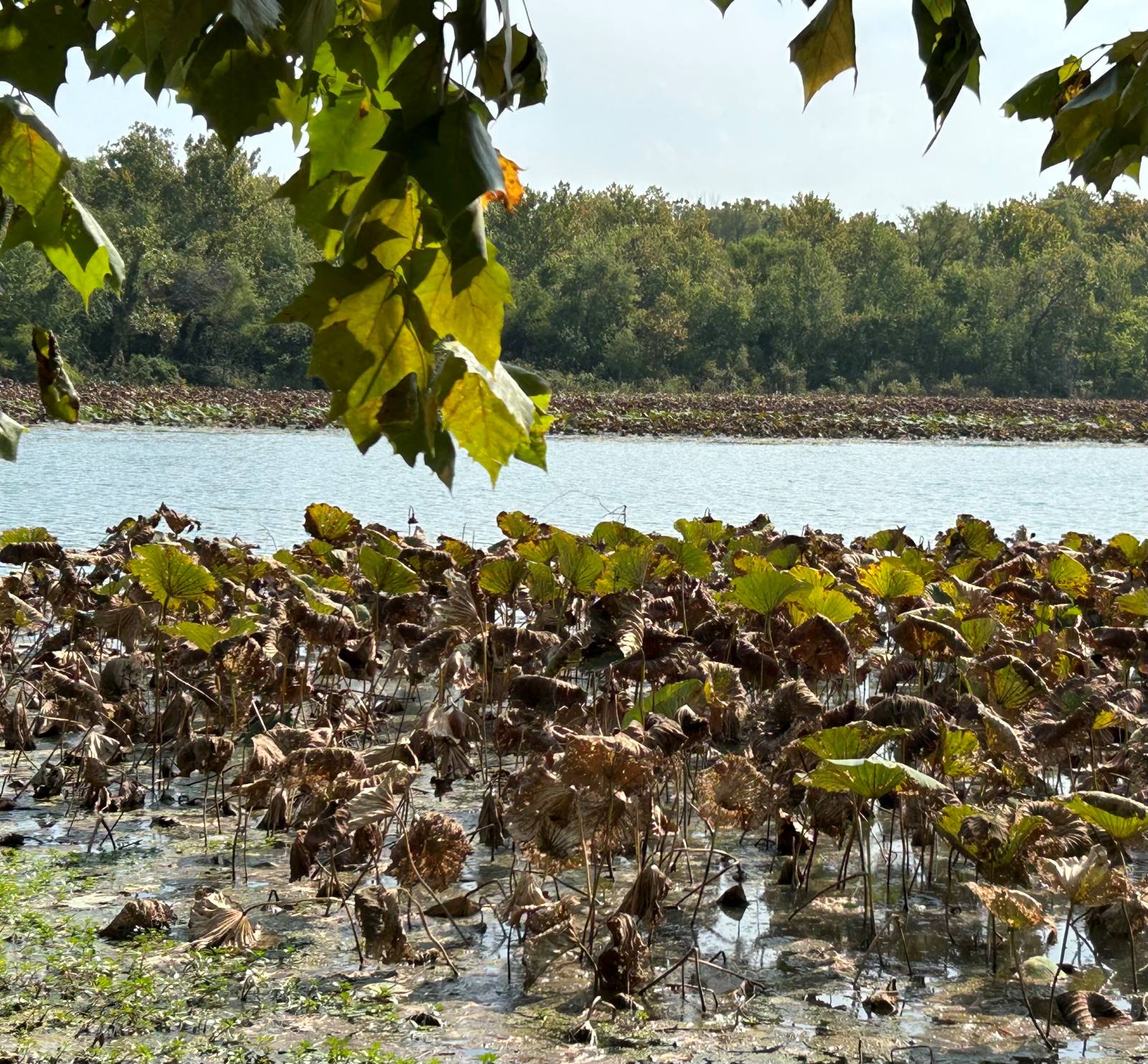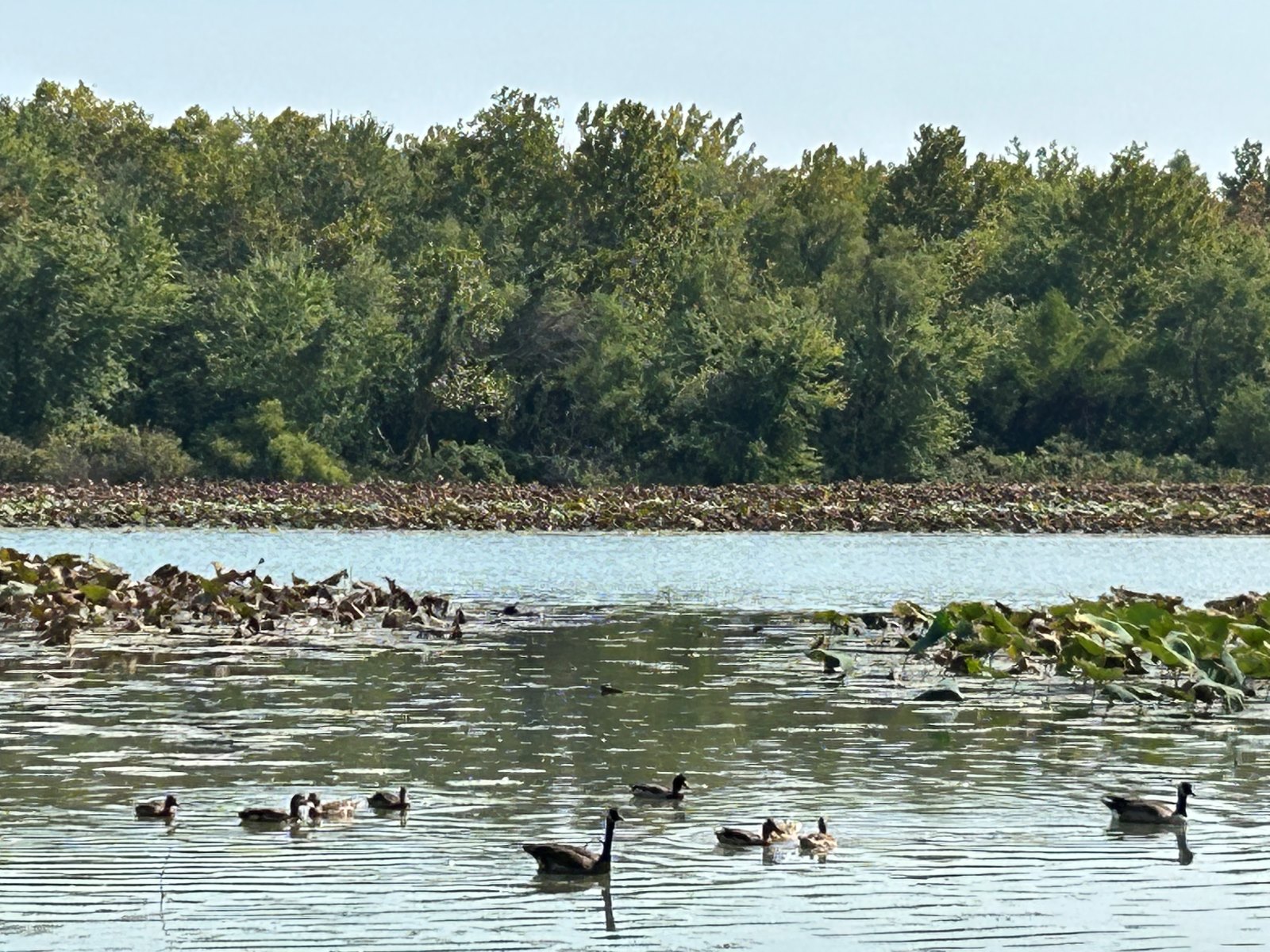Answer Man: What is the plan to stop Lake Springfield from being completely taken over by aquatic plants? — Cliff Nurnberg, Springfield
First, Cliff, you're right. I went to Lake Springfield Monday and hiked up the bluff to take photos. It seemed to me the lake — and the James River which flows into it — are more choked by aquatic plants than ever.
I don't think I can directly answer your question in this column. It's a big question and a big issue...
One possibility under discussion is whether or not to dredge the lake.

I'll keep this answer short because there is a master plan being developed for Lake Springfield and the surrounding city-owned land — 300 acres underwater and 700 acres that are not, including the decommissioned power station. The City of Springfield paid $1 million for a two-year study.
Your question is timely because there is a public meeting for the plan to be held from 6-8 p.m. Thursday, Oct. 12, at the Springfield Art Museum.

The aquatic plant you see is the American lotus. Its roots are anchored in the mud, but the leaves and flowers emerge above the surface several feet. The top of the plant looks like a shower head.
The American lotus is related to the water lily, biologically speaking. It grows in lakes, swamps and areas subject to flooding.
According to the Missouri Department of Conservation, it can become a nuisance plant. I think it's fair to say that in the eyes of many who live here, it is a nuisance on Lake Springfield.
Brent Stock, executive director of the James River Basin Partnership, was at the lake in September.

“It's probably more covered in aquatic plants now than it has ever been before,” Stock says.
The sediment that flows into the lake from the east — carried by the James River — accumulates at the dam. The current is strong enough to take the river water over the dam, but much of the sediment stays, providing a nutrient-rich bottom for aquatic plants — as well as an ever-shallower lake.
In a way, Stock says, we are witnessing a lake slowly transforming into a wetlands
Lake Springfield was created in 1957 when the James River was dammed to provide cooling water for the James River Power Station. The four cooling towers at the power plant were demolished with explosives in February 2022.
The two main nutrients — phosphorous and nitrogen — might be good for plant growth, but they harm water quality.
The contaminants enter the riverway upstream from fertilizer run-off and from animal waste.
In 2020, Lake Springfield was listed as an impaired waterway by the U.S. Environmental Protection Agency because of algae blooms that can deplete oxygen in the water and cause a bad smell when the algae dies and decays. These algae blooms can kill fish.
It would be a major loss to the area should the lake and river become so overrun with aquatic plants that those in canoes and kayaks can't navigate the waterway, Stock says.

“I think of recreation as a tool when it comes to water quality,” Stock tells me. “If people can't get out and connect with Lake Springfield in a way that they enjoy, whether it's paddle boarding, or kayaking, canoeing, fishing, whatever it may be, if they can't access it, they're going to have a negative opinion of that body of water.
“I always kind of joke that if it looks like a ditch, people are going to treat it like a ditch,” he says. “But if it looks like a beautiful stream, people are going to want to take care of it.”
This is Answer Man column No. 53.

